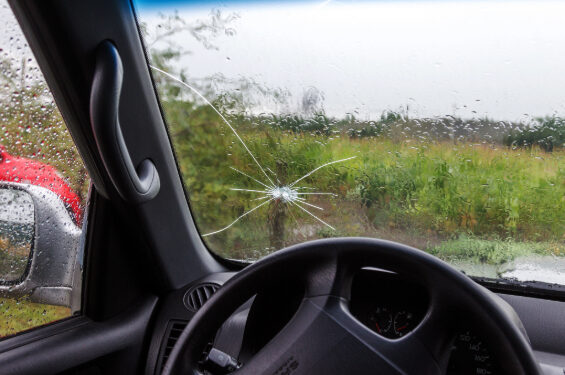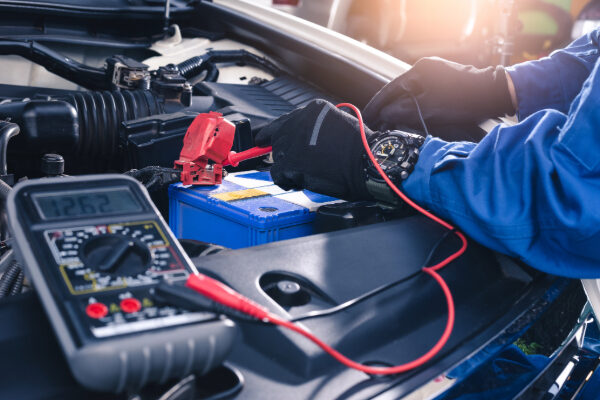Ready to restore a vintage motorcycle? You can ride down the open road with a one-of-a-kind bike that you restored bolt by bolt. Or, you can also try to make some extra money on a motorcycle restoration. Research suggests that more people are willing to pay top dollar for classic motorcycles. A 1951 Vincent Black Lightning, for example, sold at a UK auction for $929,000.[1]
Whether you’re selling the bike or planning to ride it yourself, it helps to have a plan. Vintage motorcycle restoration takes time, patience and money, but it’s a highly rewarding project. To help you get started, here are six tips to help you make sure your motorcycle restoration project goes smoothly.
1. Find a service manual
You need a variety of tools to fix up an old bike, but many experts say their most valuable tool is the bike model’s service manual. A service manual gives you all of the need-to-know information about your motorcycle, including step-by-step instructions to maintain it.
There are different kinds of service manuals, but the most detailed manual is called an OEM factory repair manual. It’s not typically given to buyers; it’s usually something that service techs use. These guides provide in-depth information about how your motorcycle is assembled, which can help you learn how to rebuild the bike. To get your hands on one, you can look online.
2. Disassemble and organize as you go
You might be itching to take apart your bike and start rebuilding, but take your time. If you get too excited, you might end up with a garage full of pieces and no idea how to put everything back together.
Take the bike apart in sections and rebuild it as you go. Get a cheap digital camera, something you don’t mind getting a little dirty, and take pictures as you remove pieces. Place small parts in bags and label them. Taking these small steps makes the rebuilding process much easier.[2]
3. Make a plan
A classic motorcycle restoration benefits from forethought. You need a detailed plan with steps to follow to help you keep the project organized. Write down which sections you plan to fix and in what order. Tack the plan to your garage wall. Use it as a guide.
Your bike’s condition can fully guide your plan, but here’s a basic outline to get you started:[3]
- Battery check
- Carburetor
- Gas tank
- Spark plugs
- Electrical
- Lights
- Oil change
- Chain and sprockets
- Brakes
- Tires
- Exhaust
- Custom work
4. Be patient when ordering parts
Finding parts for a motorbike restoration can take some time, especially if your bike is older. Use local and digital resources to track down what you need. Online forums, motorcycle dealers, scrap yards and local mechanics are all great sources.
Keep in mind that finding parts takes time, especially if you want original parts. If you’re willing to use alternative parts, your wait time could be considerably less. A bike rebuilt with alternative parts is often called a “rider restoration” where the sole purpose of the project is to get the rider on the bike and cruising the roads.[4] It’s up to you which route you’re okay with.
5. Add a personal touch
As you rebuild the bike, you can make it your own. You might decide to add custom handlebars, a cool paint job or unique rims. There are so many ways to turn an ordinary bike into a head-turner that expresses your personality.
Aren’t sure what you want to do? Do some online research. Search for bikes with a similar build and check out some pictures. Jot down a few things you like.
You may need some help with custom work. Ask around for references to make sure your bike is in good hands. Talk with a restoration mechanic about what you want. Consider showing them pictures or making a sketch of what you’re looking for if it’s art related.
6. Don’t be afraid to ask for help
The motorcycle restoration community is a helpful one. If you have a question, ask. You can start with your local motorcycle mechanic. Talk with them about their previous projects and ask about any resources they have.
Once you’ve bought a bike, take it to the mechanic for a once-over. The mechanic can help you assess what needs attention and help you create a plan to rebuild. You can also visit online forums or vintage motorcycle shows to chat with restoration enthusiasts and get advice.[5]
With these six tips, you’re well on your way to restoring a little piece of automotive history. Once your bike is ready to roll, make sure you have the right level of insurance coverage. Nationwide offers insurance that’s tailored to classic motorcycles to keep you and your bike protected.
[1] https://www.krem.com/article/news/nation-now/classic-motorcycle-prices-soar-but-this-vincent-tops-them-all/
[2] https://motorcyclehabit.com/44-motorcycle-restoration-tips-and-tricks/
[3] https://www.simple.com/blog/ultimate-guide-to-rebuilding-an-old-motorcycle
[4] http://www.trademotorcycles.com.au/motorcycle-restoration-hints-tips/
[5] https://motorcyclehabit.com/44-motorcycle-restoration-tips-and-tricks/



